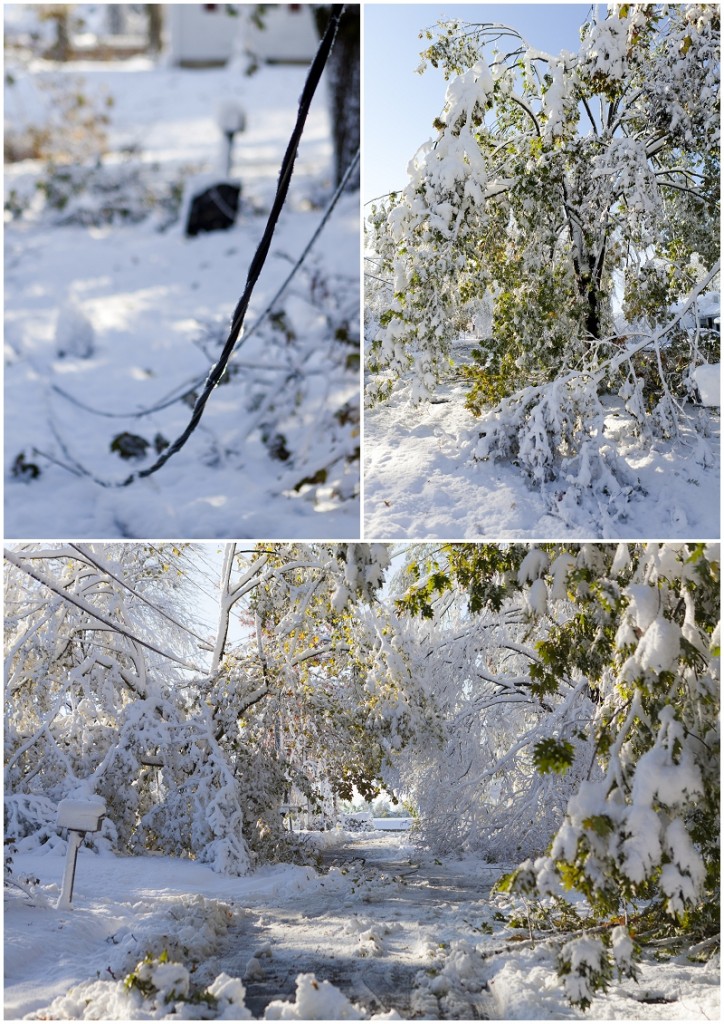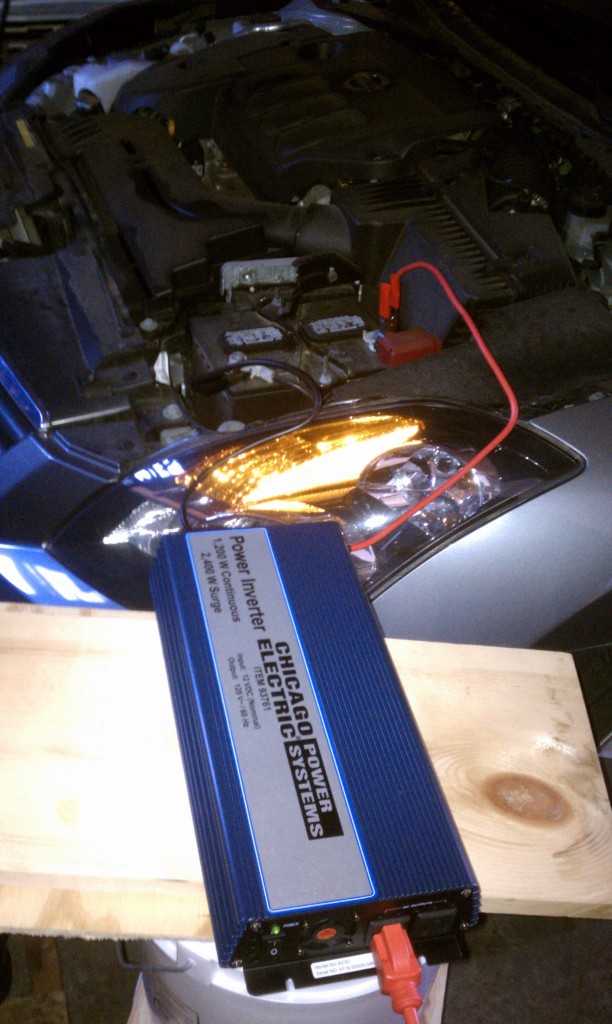Emergency Heat
Just for good measure, let’s get this out of the way up front:
- The information within this article is to be considered educational only. Do not try this at home. Do not attempt anything you read in this post. Consult with professionals. Be smart and be safe. I’m not responsible for any damage to person or property for the information contained in this article.
On October 29th 2011, we were hit with a freak October snowstorm. We’re no stranger to snow in Massachusetts, but the problem was that the leaves hadn’t fallen off the trees yet. The snow was so heavy on the trees that limbs were breaking left and right. We hardly slept that night for fear a tree was going to hit the house. Thankfully we came out unscathed, although without power. We didn’t realize at the time that we’d be without power for 8 days though! The first couple of nights were tolerable, but as the days progressed – and no power trucks in sight – we knew we were in for the long haul.

At this point it’s day 3 and generators are either hard to find, or priced 2 times their normal price. No thanks! So talking with a couple of co-workers who were in the same boat, they mentioned using an inverter hooked up to my car’s battery to power my furnace. I looked at them like they had 2 heads, and they went on to explain further. I’ve used inverters before, but they’re the small ones that power cell phone chargers and maybe a laptop – but to power my furnace!? My furnace is hard-wired into my house, so how is it possible? Consulting with some local experts helped me out!
- Warning! PERFORM AT YOUR OWN RISK AND HAVE COMMON SENSE!
- If you decide to use my post as inspiration to help yourself, please understand that you are doing so at your own risk.
- You could damage your car, break your furnace and even burn your house down.
- This warning is not to be taken lightly, messing with electricity is dangerous.
Okay, so now that the warning is out of the way, here’s how we broke it down to get my furnace hooked up to the inverter.
- Turn off the main breaker to the house
- Turn off the main breaker to the house
- Turn off the main breaker to the house. Get my point?
- Talk to a licensed electrician about this.
- First thing you need to do is find out how many watts your furnace is using. You can find this by the simple equation of Watts = Amps multiplied by Volts. So in my specific case, my furnace is 7.1 amps at 120 volts giving me 852 watts. Granted my furnace may be at 110 or 115 volts, I still want to aim for the high side of 120 giving me an extra “buffer room”. Your wattage will vary from mine; use the formula above.
- Knowing how many watts you need is crucial because you need to size the inverter accordingly. Bad things will happen if you get an inverter that isn’t powerful enough. If you’re lucky, you’ll break the inverter. If you’re not lucky, you’ll break your car or something else. Either scenario sucks!
- So now that I know my watts, I can start to shop for an inverter. Since I was looking for a fast solution I picked mine up locally. However if you’re planning ahead something like this should do the trick. If you size one a little larger than what you need for your furnace, than you can power a few other items like lamps and cell phone chargers. Just be sure to count your watts and don’t over-do it!
- Okay, back to the furnace. Now comes the tricky and technical part. Most furnaces require a pure-sine waveform due to the level of electronics inside. If your furnace has a mini computer in it, you want to make sure that there is a DC transformer in-line between the inverter power and the computer board. Reason being is that the inverter won’t give you clean pure-sine waveform. As a result the modified waveform from the inverter can completely damage your furnace. The transformer can help filter this power and protect your computer boards. So again, perform this at your own risk because this modification could cost you a lot of money to fix!
- My furnace is hard wired into my house. I found a junction box with the furnace wires in it, so I was able to remove the black (hot) white (neutral) and green (ground) wires from the house feed. I wire nut capped the house wire feeds to be safe.
- I then cut an extension cord and stripped back the black, white and green wires from the extension cord and attached them to the furnace wires using wire nuts and electrical tape. Voila! My furnace is now on a standard 3 prong outlet!
- Attach the inverter
- Plug the furnace into an extension cord and then plug the extension cord into the inverter.
- Turn on your thermostat and then turn the inverter on. If all goes well you should hear your furnace fire up! Have some common sense and watch your furnace to make sure nothing bad happens!
- Note: Many sources say it’s not wise to leave your car idling for an extended period time. Use your own judgement on how long you should run your car. We ran ours for 2 hours a night and that was enough to get warm.
Once power is restored to your house, make sure the main power breaker is still off and reconnect the furnace back to the house leads in the junction box. Turning off the main breaker is just another way to keep you safe while you play with electricity. Of course, watch your furnace too, just in case something funny happens you can react to it a lot faster.
Just remember to count your watts so you don’t burn out your inverter. We bought a 1200 watt inverter so we were able to power the furnace (852 watts), charge the laptop and gadgets (90 watts), listen to the police scanner for entertainment (10 watts) and have a lamp on (60 watts). In total we were using 1012 watts – enough room for another lamp or two, but I didn’t want to push it.
Counting your watts applies for a generator as well. Just remember to turn off the main power breaker. That’s one of the most important things.
Anyways, enough out of me. Good luck!

